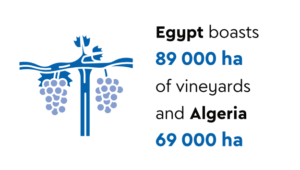The president and CEO of the South African Medical Research Council, Glenda Gray, was recently named as one of Time’s top 100 most influential people in the world for pioneering advances in preventing mother-to-child transmission of HIV.
Others – such as bank chief Maria Ramos, investment pioneer Wendy Luhabe and publisher Khanyi Dhlomo – have excelled in the commercial world. But despite great strides in many professions and in the corporate space, there’s still a slower rise to the top for many women, compared to men.
There has been some encouraging growth over the past five years, but off a low base. According to the findings of the 2018 Grant Thornton International Business Report, the percentage of women in senior positions in South Africa had risen from 26% five years ago to 29% by the end of 2017.
South Africa slips when it comes to having women as CEOs. The number is still lower than the global average, with many outstanding candidates for top leadership positions hovering in middle-management roles.
In the political arena, there’s a notable absence of women in powerful positions. All three of South Africa’s leading political parties – the African National Congress, Economic Freedom Fighters and Democratic Alliance – are led by men, with the surrounding leadership circle also male-dominated.
South Africa is ranked 19th in the WEF’s Gender Gap index, which benchmarks 144 countries in their progress towards gender parity in four key areas, namely health, education, economy and politics. The country is recognised for recording an increase in the number of women legislators, senior officials and managers. Worryingly, however, the latest report also lists a widening gender gap for wage equality for similar work to men, as well as estimated earned income.
Rwanda is sub-Saharan Africa’s top performer and ranked in the global top 10, with Namibia also scoring well. Sub-Saharan Africa has improved markedly compared to other regions, but this is mainly in terms of participation in the economy, rather than in the corporate sphere. More women than men make up the labour force in Rwanda, Mozambique, Burundi, Malawi and Tanzania, for example.
There is a plethora of studies and research into women in the workplace, but achieving gender parity at board and CEO level – as well as in the economy in general – continues to be a challenge. Gender equality is enshrined in South Africa’s Constitution, but there is still some reticence on the ground to change. In many workplaces, there’s a lingering patriarchal attitude and it appears that it is more comfortable to keep the status quo.
Studies have shown that women aren’t encouraged as much as their male counterparts to take on top leadership roles. Many also underestimate their own skills and abilities.
Women have proved time and again to be excellent leaders – engaged, enthusiastic and highly committed to their work and employees. They value teamwork and are often masters at multitasking. Some companies have recognised this fully and are taking steps to ensure the talents and skills of women are recognised and embraced. This augurs well for the future – women also make up more than half of the student body in many South African universities and are driven and enthusiastic about propelling change in the world. Diversity in the workplace has proved to have tremendous benefits. Teams that are more diversified are more innovative, and make better, more considered decisions. In a rapidly changing world, having a diverse top team with more dynamic women leaders will ensure companies are better poised for the future.
















